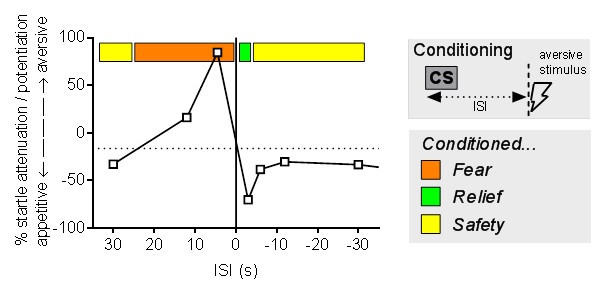Project B13N
Emotional aspects of event learning in rats: Characterization and neural basis

Prof. Dr. Markus Fendt

Dr. Jürgen Goldschmidt
Dangerous events can be better coped if there was some learning from previous dangerous events. Important to learn is: What caused the event? What stopped it? During such event learning, environmental cues which preceded the dangerous event are associated with the emotion “fear” and induce fear behavior in future. Thereby, the learning of such cues can help to avoid dangerous events in future, or to handle them more efficient. The second class of environmental cues which were present after the offset of a dangerous event are associated with the emotion “relief” and induce appetitive behavior in future. A third class of cues is explicitly unpaired with the dangerous event. Such stimuli are associated with safety and also later induce appetitive behavior. All three classes of cues can help to stop dangerous events in future and/or to encounter such event with less fear.
Thus, event learning consists of learning phenomenon with very different emotional and behavior consequences: fear learning, relief learning and safety learning. These learning phenomena can also be observed in humans. Interestingly, humans with anxiety disorders express exaggerated fear learning but are impaired in safety learning.
In our project, we want to characterize these two learning phenomena in laboratory rodents, investigate their neural basis and dissociate them from each other.

The valance of a stimulus assoziation depends of the timing: Stimuli presented before an aversive event (positive ISI) lead to aversive associations (fear). Stimuli presented shortly after an aversive event (negative ISI) lead to appetitive memory (relief) and explicitly unpaired (long or randomized ISI) stimuli are learned as safety signals.